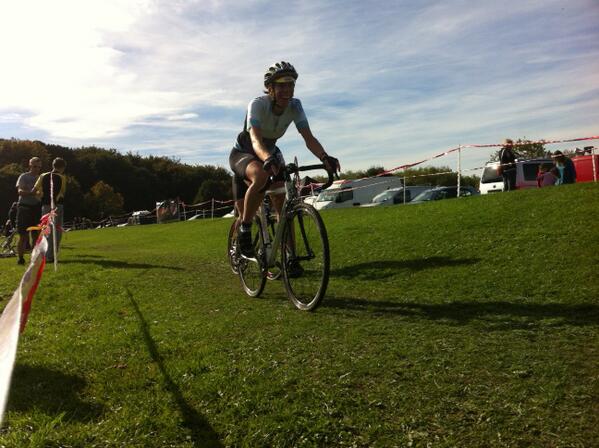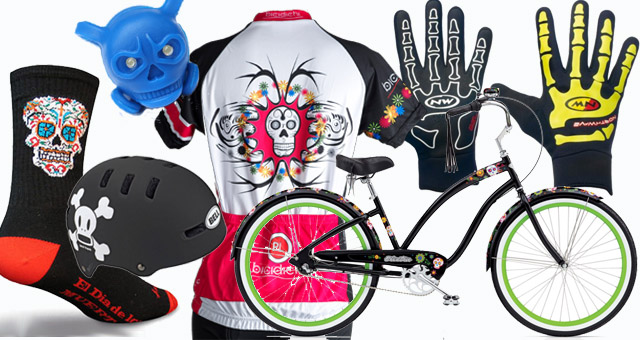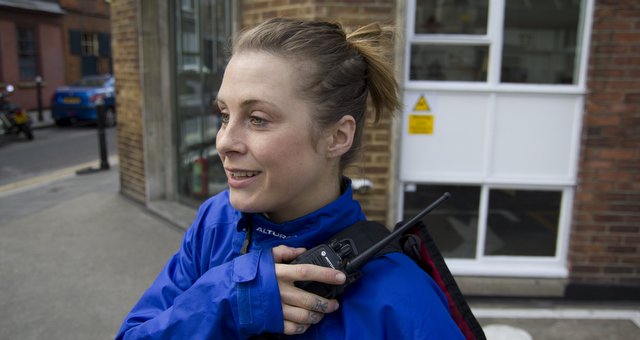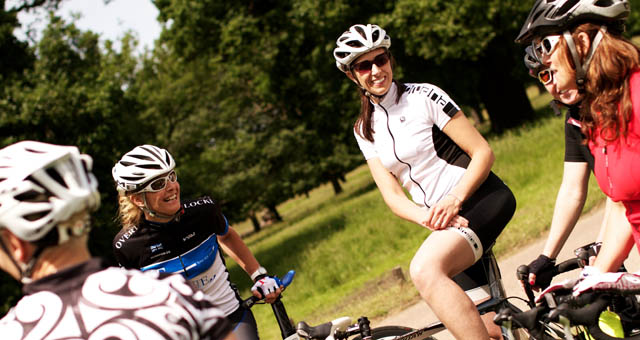Ever wondered who comes up with the clothing designs you wear on your bike? Or why the kit in shops often features pink or turquoise? Or even how long it takes to go from idea to finished garment?
Cat Heraty, cycle clothing designer and industry insider, shares her knowledge, experience, and a few opinions of her own.
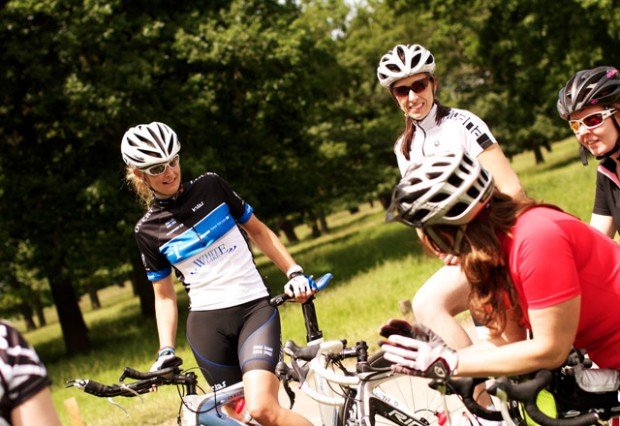
Getting into design
I never really knew what I wanted to do as a job when growing up. I’d spend my time racing my sister on a rainbow Raleigh round the local country estate, imagining I was a pro in the Tour de France, doodling for hours and making clothes for my Sindy dolls.
At school, I never felt particularly focused. It was only when a friend mentioned she wanted to do fashion design did I sit up a take notice. I thought that my love of art would get me nowhere, but finally here was a new career angle I could sell to my parents, so I got into a fashion course and suddenly felt like I belonged.
After I graduated, I turned down various offers to design wedding dresses, and set about doing any old job while I waited for my golden opportunity. You have to make your own destiny in life, so when I got a job in a Fat Face store and announced to the manager that one day I would design for them, he laughed in my face. This of course only made me more determined, and I eventually got confident (beer fuelled) at the Christmas party and got chatting to the head of design. He gave me a chance, and I’ve never really looked back.
A cycling kit designers dream project
Over the following years I designed for Fat Face, Gul International, and took various freelance projects including designing running and cycling kit which led me to my best EVER freelance gig – designing the Rapha Team Sky kit for 2013!
As the recruitment lady told me, it’s a very rare thing to find a designer and a cyclist who’s designed cycling kit all rolled into one.
I had to keep the project a secret from everyone, including my husband, who had a man-crush on Cav and Wiggo. I put together presentations for Fran Millar and Sir Dave Brailsford, followed the Tour de France, Tour of Britain etc, and even met some of the team at a special party at the Rapha Cycle club. I couldn’t believe my luck and am very proud of what we achieved as a team; I was working with and on many existing Rapha designs, and was part of a group of incredibly talented designers and product developers.

That project came to an end, but I’m very excited about my current job – designing for howies! There’s some great stuff in the pipeline, and I hope I can enhance this. The current line has had some great feedback through Total Women’s Cycling, and you’re all going to love what I’ve seen of the next few seasons!
The design process
So where do the clothes you don to ride your bike actually come from?
There are a few parts to the design process, and from conception to delivery of the product there’s a pretty long life cycle (pardon the pun) – 12 to 18 months, in fact!
My work comes in at the start of the process; there are many different ways this starts, but the norm is this. Designers go out and research the season in question, through trade fairs, shopping trips, internet research, new fabric developments from suppliers and usually trend forums and trend prediction websites.
Brands pay thousands per year for their global trend predictions, and everything; colours, prints, shapes, etc., will come from this. I have mixed opinions on this method. Sites like this create their own self-fulfilling prophecies. They say ‘next year is all about bird prints’, so everyone goes to town creating bird prints, for example. If you see something enough in the shops, most of the time that’ll be what you buy into subconsciously – like mass brain-washing.
That said, it does have a point because without creating new things for the customer to buy into, they’ll loose interest and eventually go elsewhere. Equally, I think that going out on a limb and trying to be a little different can pay dividends too.
A ‘season brief’ will have been issued, outlining the need for 10 jerseys, 3 shorts, for example. Based on this and combined with the research, the designer can go to town creating the loveliest looking garments they can. Each design comes with a ‘tech pack’, which outlines the fabrics, trims, colourways, wash treatments, sizing and rough pricing.
The designs are then presented to the companies Directors and CEO, and once it’s finally approved, it goes into production. I have NEVER seen a sample signed off first time; I’m hoping it’s not just me, but there’s an awful lot of trial and error that goes into turning that beautiful CAD image into the garment you love to wear.

With women’s clothing, the fit is the hardest thing to get right. We have lumps and bumps that change depending on where we are in our menstrual cycle or fitness levels, and it requires feedback from loads of different women of the same ‘size’ to get general consensus because we’re all so individual.
It’s relatively easy for men. There are only really 6 pieces that make up a man’s wardrobe; tee, jumper, shirt, trouser, shorts and undercrackers, and generally most guys aren’t bothered about fitting a M in one shop and a L in another. Women think we are one size and complain when that size doesn’t fit in one shop, or squeeze into something too small and spend the day being grouchy because we’re uncomfortable
There can be up to 4 more stages of sampling and feedback before we get to the ‘Salesman Samples’, and ‘Photo-shoot Samples’. This is where the shops get to see it and place orders, and once this is done the factories start production – but again through all these stages any number of changes can happen, and it’s more common than you might think.
The factory might run out of fabric, or the fabric shrinks more than expected in pre-washing, or the button supplier goes out of business, or the rainy season comes early which effects the colour matching in prints, so half the batch looks dodgy.
Once the garments are made, a ‘shipment sample’ is shipped ahead of the bulk order from the country of origin. This might look spot-on, in which case all good, or it might look like old pants, and at that stage you have the option to receive or drop the order.
The wholesale buyers get a bad rep in my side of the business for refusing to accept deliveries that don’t look like what they’ve ordered, but it’s hard to sell kit that looks like something that’s been stuck in the tumble dryer for 5 years. It’s equally hard to fill a shop with nothing because you’ve turned down a product for being charcoal, rather than the black that was ordered.
Who are the designers?
In my experience, in the lifestyle-clothing sector most designers tend to be women. In technical kit, I’d say that it’s roughly 50/50 – though I sometimes look at things like the Assos product shots, pink kit and chamois shapes (that look penis shaped) and think that it could only have been designed by a man – surely women wouldn’t think it’s a good idea.
I was recently asked to design a range of women’s cycling kit by a man who acknowledged that women’s cycling kit is pants, but he didn’t know what he wanted and expected me to come up with the concept and brand identity. In the end I turned it down, as it would always be a cycling brand for women, designed by a women, owned by a man (getting the profit).

We need to stop buying all the cheap, after-thought kit that chafes and feels like a saggy nappy. It’s a false economy, and right now there are not many people with money to throw away. We have to think about cycling kit as investment pieces; the more you save not buying rubbish kit, the more you can save for something you’ll want to wear and that will last.
The problem with women’s kit, in my opinion, is that it’s so easy to make and sell kit to men. There is a lot more historical data collection of males between the ages of 30 and 50, for example, who are active and invest in bikes and kit. For women the kit has always been a sloppy afterthought – and women don’t want ugly kit, so make do with their favourite leggings and tee, and put the ugly shorts underneath.
Because the sales figures are not there to represent the demand for women’s kit, you get a token offering that’s never taken seriously.
This links in with the ‘shrink and pink’ topic which itself harks back to the trend prediction thing. The specialist spin-off from this is the colourist – a phenomenon where women pay someone to tell them what colours they should wear to enhance their skin tone and hair colour. I’ll put money on the fact that anyone who has done this has been told they should wear turquoise and pink, because these colours suit almost everyone – fact!
So when cycling brands decide to make women’s kit, the safe option is to use these colours as they suite anyone, and annoying though it is they are attempting to optimize sales with safe colours. Likewise, when your local shop stocks these options, they too are playing it safe.
If we want the offering to change, we have to start writing to the brands and telling them what we want, and when they start to make improvements we need to go out and buy so they will invest in women. We want GREAT kit, we want to look good and feel comfortable and be free to perform.
Our voice is almost always in our purses.


